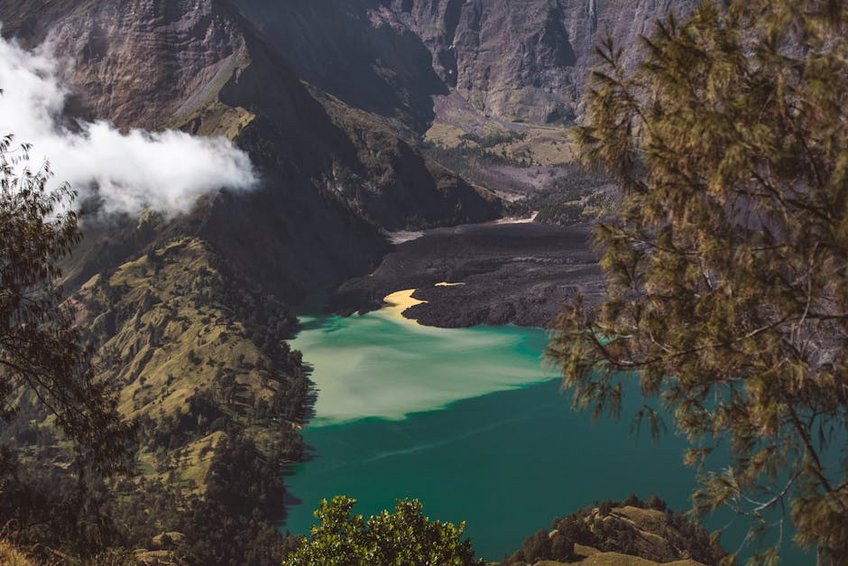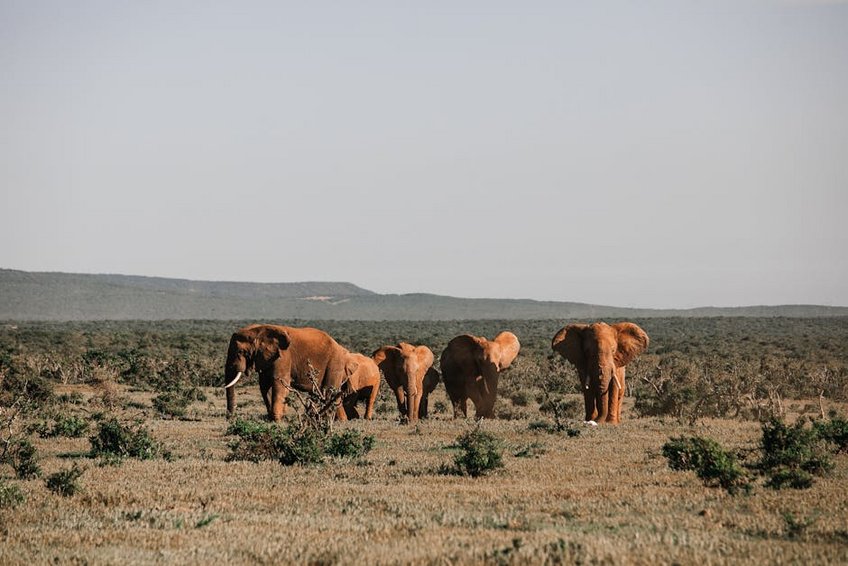Discover Burundi Rusizi National Park: Your Ultimate Wildlife Adventure Guide
Nestled in the heart of East Africa, Burundi Rusizi National Park offers an unforgettable escape into one of the continent’s most biodiverse regions, where the Rusizi River flows gently into Lake Tanganyika. As you plan your journey, you’ll discover a sanctuary teeming with hippos, crocodiles, and over 200 bird species, making it a paradise for nature enthusiasts and photographers alike. This protected area spans approximately 100 square kilometers and serves as a critical habitat for wildlife, while providing visitors with serene boat safaris and walking trails that immerse you in unspoiled landscapes. Whether you’re a solo adventurer or traveling with family, Burundi Rusizi National Park delivers a unique blend of tranquility and excitement, far from the crowded tourist trails. With its rich ecological significance and cultural heritage, this park invites you to explore a side of Africa that remains beautifully authentic and accessible for international travelers seeking meaningful experiences.
Burundi Rusizi National Park Essential Information – Getting Started
Before embarking on your adventure to Burundi Rusizi National Park, it’s crucial to understand its foundational details to ensure a smooth and enjoyable trip. Located in northwestern Burundi, near the capital Bujumbura and the border with the Democratic Republic of Congo, the park is easily accessible yet feels worlds away from urban life. Established to protect the Rusizi River delta ecosystem, it features a mix of savannah, wetlands, and riverine forests that support diverse flora and fauna. The park’s management focuses on conservation efforts, so your visit contributes to local sustainability initiatives. Entry fees are modest, typically around $10-20 USD for international tourists, with guided tours available to enhance your experience. Remember to carry cash in USD or euros, as credit card facilities may be limited, and check visa requirements beforehand, as US and EU passport holders often need visas obtained in advance or on arrival.
Location and Geography – What You Need to Know
- The park is situated along the Rusizi River, approximately 15 kilometers from Bujumbura, making it a convenient day trip or overnight stay with stunning views of Lake Tanganyika.
- It encompasses a delta area with seasonal flooding, creating ideal conditions for wildlife viewing, especially during dry seasons when animals gather near water sources.
- Geographically, the region features flat plains and riverbanks, with elevations ranging from 770 to 800 meters, offering easy walking paths suitable for all fitness levels.
- Budget option: For around $50-100 USD per day, you can cover park entry ($10-20), shared boat tours ($15-30), and basic guesthouses in nearby Bujumbura, focusing on self-guided walks and local meals.
- Mid-range option: At $150-250 USD daily, this includes private guided tours ($40-60), comfortable lodges with meals, and round-trip transportation from Bujumbura, offering a balanced mix of comfort and adventure.
- Luxury option: Spending $300-500 USD per day grants you exclusive safaris, upscale accommodations with lake views, and personalized itineraries, ideal for those seeking a premium wildlife experience.
- Burundi Tourism Official Site
- Lonely Planet Burundi Guide
History and Conservation – Key Details
Burundi Rusizi National Park has a rich history tied to Burundi’s post-independence conservation efforts, initially designated in the 1980s to safeguard critical habitats. Over the years, it has faced challenges like poaching and habitat loss, but recent partnerships with international organizations have bolstered protection and community engagement. Your visit supports these initiatives, as park fees fund anti-poaching patrols and educational programs for local communities. The park’s role in preserving endemic species, such as the sitatunga antelope, highlights its importance in East Africa’s ecological network, offering you a chance to witness conservation in action while enjoying its natural beauty.

Burundi Rusizi National Park Planning Your Trip – Timing and Budget
Planning your visit to Burundi Rusizi National Park involves considering seasonal variations and budget options to maximize your experience. The park’s climate is tropical, with distinct wet and dry seasons that affect wildlife visibility and accessibility. For first-time visitors, I recommend allocating 1-2 days to fully appreciate the boat safaris, birdwatching, and cultural interactions. Budget-wise, you can tailor your trip from economical to luxury, with costs covering park entry, guides, transportation, and accommodations. Given Burundi’s developing tourism infrastructure, booking tours through reputable operators ensures safety and convenience, especially for Western travelers unfamiliar with the region. Always pack essentials like insect repellent, sunscreen, and reusable water bottles to stay comfortable during your explorations.
Best Time to Visit Burundi Rusizi National Park
The ideal time to explore Burundi Rusizi National Park is during the dry seasons, from June to September and December to February, when wildlife congregates near the river and trails are more navigable. During these months, you’ll enjoy cooler temperatures averaging 25°C (77°F), minimal rainfall, and excellent opportunities for spotting hippos and birds in their natural habitats. Conversely, the wet season from March to May can make some areas muddy and less accessible, but it offers lush greenery and fewer crowds, perfect for photographers seeking vibrant landscapes. Regardless of when you go, early morning or late afternoon visits provide the best lighting and animal activity, so plan your schedule accordingly.
Budget Planning and Costs
Essential Preparation Checklist
To ensure a hassle-free trip, start by checking visa requirements for Burundi, as US and EU citizens typically need a visa obtainable from embassies or on arrival for about $40-90 USD. Vaccinations for yellow fever are mandatory, and malaria prophylaxis is highly recommended due to the park’s wetland environment. Pack lightweight, breathable clothing in neutral colors, sturdy walking shoes, and a waterproof jacket for sudden rains. Don’t forget a good camera with zoom lenses for wildlife photography, and consider hiring a local guide through approved agencies to enhance safety and cultural insights. Lastly, inform your bank of travel plans to avoid card issues, and carry some USD cash for small purchases, as ATMs may be scarce near the park.
Burundi Rusizi National Park Top Attractions and Activities – Must-Do Experiences
Your visit to Burundi Rusizi National Park is packed with unforgettable activities that cater to nature lovers and adventure seekers alike. From boat safaris along the Rusizi River to guided walks through dense forests, each experience offers a unique perspective on the park’s ecosystem. Wildlife spotting is a highlight, with common sightings of hippos, Nile crocodiles, and primates like vervet monkeys, while bird enthusiasts can marvel at species such as the African fish eagle and malachite kingfisher. The park’s tranquil atmosphere also allows for cultural exchanges with local communities, where you can learn about traditional fishing techniques and conservation stories. Whether you’re seeking adrenaline-pumping encounters or peaceful moments in nature, Burundi Rusizi National Park delivers a diverse range of attractions that will leave you with lasting memories.
Must-See Highlights
Among the top attractions in Burundi Rusizi National Park, the boat safaris stand out as a can’t-miss experience, gliding you through the river’s channels for up-close views of hippo pods and basking crocodiles. Another highlight is the park’s birdwatching trails, which are especially rewarding during migration seasons from October to April, when you might spot rare species like the shoebill stork. Don’t skip the scenic viewpoints overlooking Lake Tanganyika, where you can capture breathtaking sunsets and observe local fishermen in action. These spots are easily accessible and often included in guided tours, ensuring you get the most out of your visit without missing key sights.
Hidden Gems and Local Favorites
Venture off the beaten path to discover hidden gems in Burundi Rusizi National Park, such as the lesser-known walking trails that lead to secluded spots perfect for picnics or meditation. Local guides often share insights into traditional uses of medicinal plants or point out smaller wildlife like monitor lizards and butterflies that many tourists overlook. For a cultural twist, visit nearby villages to experience Burundian hospitality and sample fresh fish dishes prepared using age-old recipes. These experiences not only enrich your trip but also support community-based tourism, giving you a deeper connection to the region beyond the typical tourist routes.
Burundi Rusizi National Park Practical Travel Information – Logistics Made Easy
Navigating the practical aspects of your trip to Burundi Rusizi National Park is straightforward with a bit of preparation, especially for Western travelers accustomed to more developed infrastructures. Transportation options include taxis or rental cars from Bujumbura, with the journey taking about 30-45 minutes on paved roads, though 4×4 vehicles are advisable during rainy seasons. Accommodations range from basic campsites within the park to comfortable hotels in Bujumbura, all bookable online through international platforms. Safety is generally good, but it’s wise to travel with guides in remote areas and avoid night travel due to limited lighting. Currency exchange is best done in Bujumbura, where USD and euros are widely accepted, and SIM cards for mobile data are affordable for staying connected.
| Category | Options/Features | Price Range (USD) |
|---|---|---|
| Accommodation | Basic guesthouses, mid-range lodges, luxury resorts with lake views | $20-150 per night |
| Activities | Boat safaris, guided walks, birdwatching tours, cultural visits | $15-60 per activity |
| Transportation | Taxi rentals, 4×4 hires, boat transfers from Bujumbura | $30-100 per day |


